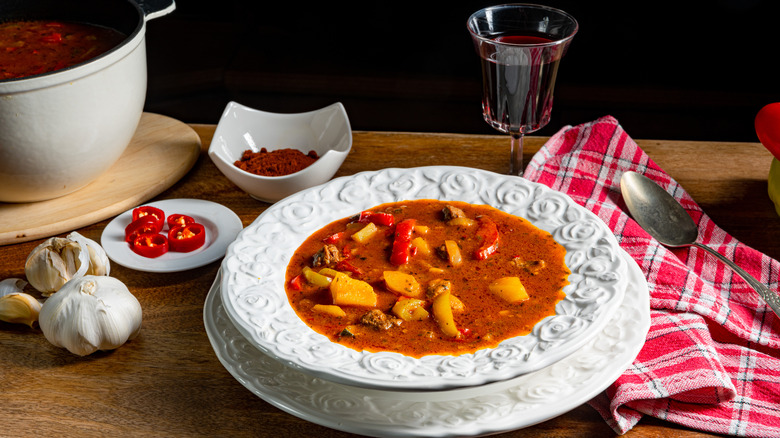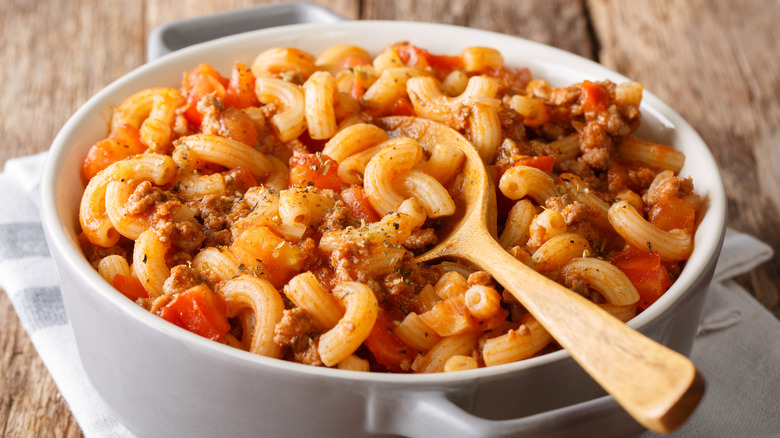Hungarian Vs. American Goulash: What's The Difference?
While a stew typically seems like a stationary dish — liquid-y goodness bubbling away on a stove — goulash emerged alongside nomads. Dating back to the 9th century, Magyar shepherds would simmer meats, onions, and other ingredients with water. Once all of the liquid had been absorbed, they'd dry the mixture in sheep's stomachs. Come mealtime, water was re-introduced, and a proto-dehydrated meal emerged, explains Britannica.
Throughout subsequent centuries, goulash continued its migratory nature, integrating into the cuisine of various cultures. Across nations like Albania, the Czech Republic, and Ethiopia, variations simmered with local ingredients. In the 19th century, following the split of the Austro-Hungarian Empire, Hungarians proclaimed goulash as their national dish, according to Saveur. Served alongside bread (rye is ideal), dumplings, or egg noodles called csipetke, the soup's most integral component is the vibrant, red Hungarian variety of paprika, per Lonely Planet.
For five decades following 1870, more than a million Hungarians emigrated to the U.S., according to PressBooks. The goulash continued its migratory journey, and an American version was born. Let's examine the difference.
American goulash is more of a pasta and ground beef dish
A comfort classic in the U.S., American goulash bears little relation to its Hungarian predecessor. Chunks of beef or pork are replaced by ground meat, drowned in a tomato sauce over macaroni. Owing more influence to Italian-American cuisine than Hungarian, paprika isn't even a consistent addition, per Syracruse.com. The nostalgic family meal is synonymous with American chop suey, another macaroni-based one-pot dish.
Most likely, such versions emerged from generations of culinary Americanization in the diners and buffets of post-war America. American chop suey started with rice, soy sauce, and ground beef, eventually losing the rice and soy sauce in favor of a tomato-beef sauce. Similarly, American goulash became increasingly adapted to the cheesy pasta casserole, although paprika and peppers still appear in recipes, says Serious Eats. In the Midwest, variations diverge, with some containing green beans and thyme, while others have rice and chicken, reports the Jopling Globe. At its core, goulash is less about the ingredients and more about the essence of a family meal — cooked in one pot to share.

